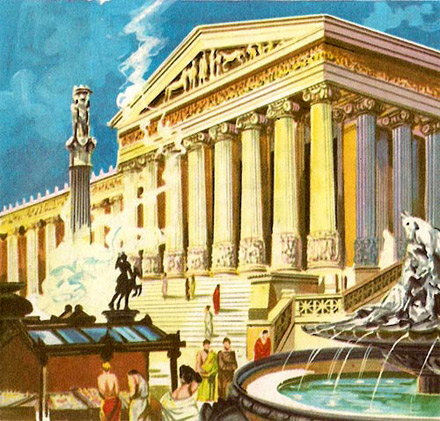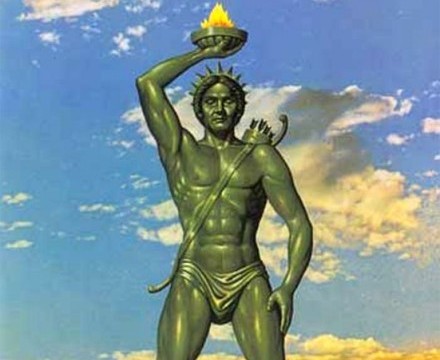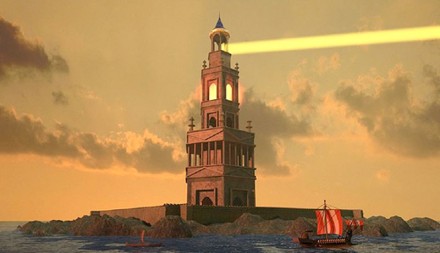The history reveals the two different stories of goddess Artemis, which from time to time mistakenly is considered to be same worshiping goddess. However, The Ephesus Goddess Artemis, sometimes called Diana was a goddess of fertility and was often pictured as draped with eggs, or multiple breasts, symbols of fertility, from her waist to her shoulders, whereas The Greek Artemis is the goddess of the hunt. That shrine of goddess was first built in 800 B.C. but then it was destroyed and rebuilt several times over the next few hundred years. By 600 B.C., the city of Ephesus had become a major port of trade and an architect named Chersiphron was engaged to build a new large temple. He designed it with high stone columns. Though, this temple didn’t last long. In 550 B.C. King Croesus of Lydia conquered Ephesus and the other Greek cities of Asia Minor. During the fighting, the temple was destroyed. Croesus proved himself a gracious winner, though, by contributing generously to the building of a new temple. This was next to the last of the great temples to Artemis in Ephesus and it dwarfed those that had come before.

Continue reading →
25 Oct 2011 at 06:12
admin
General, Present
No Comments
...
The Colossus of Rhodes was a statue of the Greek Titan Helios, erected in the city of Rhodes on the Greek island of Rhodes by Chares of Lindos between 292 and 280 BC. It is considered one of the Seven Wonders of the Ancient World. It was constructed to celebrate Rhodes’ victory over the ruler of Cyprus, Antigonus I Monophthalmus, who unsuccessfully besieged Rhodes in 305 BC. Before its destruction, the Colossus of Rhodes stood over 30 meters (107 ft) high, making it one of the tallest statues of the ancient world.

Continue reading →
The Lighthouse of Alexandria was one of the Seven Ancient Wonders of the World. It was situated on the small offshore island of Pharos, lighting the way for many sailors navigating the tricky harbor. This place was considered to be one of the centers of the civilization by the time it was build. However it needs to be mentioned that Pharos actually was not a true island: It was connected to the mainland by a dike, called the Heptastadion. In this way, Alexandria had two harbors, one on either side of the dike.

Continue reading →




Recent Comments